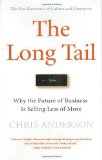Social Media: Where Does Sincerity Fit in?
 I’ve read a lot about transparency and authenticity being key in this increasingly open and social world. I started wondering how sincerity fits into the picture.
I’ve read a lot about transparency and authenticity being key in this increasingly open and social world. I started wondering how sincerity fits into the picture.
The assumption is that transparency and authenticity will automatically equate to sincerity, but this may not always be the case. The challenge that we have as marketers and PR practioners is how we are perceived by our target audiences – customers, analysts, media and bloggers.
With text based communications, sincerity is difficult to communicate. In fact, Fast Company had a tidbit about a how people interprete emails in their story about “There’s a Message in Every Email.” Punctuation, emoticons and other factors impact how your email is received and perceived by the recipient.
You could be completely transparent and authentic, but not truly speaking sincerely. Or truly sincere but perceived otherwise. How can you differentiate one from the other? I think that social media, when used properly, provides us an opportunity to be sincere in a more “natural” environment.
Why? Because the formality of email pitching gives way to the profile, pictures and personality portrayed in our LinkedIn or Facebook pages. Woul there be value in including links to our profiles when contacting bloggers and media? Possibly because face-to-face contact was previously required to achieve a level of familiarity. Now social media is helping to shape how our target audiences perceive us. If those profiles were contrived for other purposes, it would be very obvious. The sincerity factor would disappear.
I caution that the issue isn’t to pitch or promote your product/service at every opportunity – though sincere, it lacks authenticity. I believe that along with participation, transparency, and authenticity, sincerity is an important element of marketing and PR.
What do you think?
Press Coverage: Impact on Website Traffic?
 While I was at an agency, I had managed the Mindjet account for a few months. One time, our client had mentioned the precise number of hits that Mindjet received after an article was published.
While I was at an agency, I had managed the Mindjet account for a few months. One time, our client had mentioned the precise number of hits that Mindjet received after an article was published.
I had previously mentioned how you can use customized links or URL redirects to track traffic to a particular page. Though this method has its benefits, it can be labor intensive.So I was intrigued by his ability to track clicks. Going in-house provided this enlightenment. It was website analytics.
Whether you use free services like Google Analytics (Disclosure: I use this at work and for other personal sites) or pay for the service, you’re able to see which sites referred traffic to your sites, the number and when. You can even get information about how long a viewer perused your website and the number of pageviews. I believe this information can augment other measurement commonly used.
For example, by reviewing the top 50 sites that referred traffic to our website, I can see which media outlets were contributing traffic. I was surprised to learn that one blog consistently drove clicks to our website on a daily basis while an article on MarketingSherpa or MarketingProfs provided temporary spikes after the coverage.
Let’s be clear I haven’t determined if these are unique or repeat visitors or if these visitors translated into sales leads but it’s interesting nonetheless. If I worked with an agency who gained my trust, I would definitely provide them access to this information.
Now how to tie Google goal conversions into this…
PR and Blogging Outreach: Practical Tips
 In my first guest post on Tom Pick’s WebMarketCentral Blog I looked at the macro issues of PR and blogging. That post primarily focused on the macro issues impacting the quality of outreach – both traditional media and blogging.
In my first guest post on Tom Pick’s WebMarketCentral Blog I looked at the macro issues of PR and blogging. That post primarily focused on the macro issues impacting the quality of outreach – both traditional media and blogging.
Since that original post, your can read my follow up guest post that highlights my 8 Tips About Blogging Outreach. To me, good blogger relationships is one part doing your research, one part old school PR and one part transparency. Some additional resources on this topic include:
1. Erik Sebellin-Ross’ Tech for PR: Erik has included a page on Social Media Basics and his tips for blogging.
2. The Friendly Ghost’s post on Ghost Blogging: when the chips are down the balloon goes up and the lights go on. Discusses if ghost-writing a blog is advisable
3. Lifehacker’s guide to weblog comments. Great points about the do’s and don’ts of blog commenting.
4. Micro Persuasion: Steve Rubel started a lively conversation with his post on The Future of PR is Participation: Not Pitching Can PR go beyond pitching and understand how to leverage social media?
5. B.L. Ochman included her MaketingSherpa article on How to Pitch Me – and Other Bloggers – with PR on her blog
6. Lee Odden’s Online Marketing Blog discusses How NOT to pitch a blogger
7. Update: Sept. 4, 6:25 pm PST: In the August 27 PR Week, Renee Blodgett of Blodgett Communications was quoted, “Most start ups know to use blogs to clarify information about their brand and to correct inaccuracies. The PR industry should not be intimidated by ths medium that is really an extension of basic PR strategy.” Um – maybe they just need to now how to reach out to bloggers…
8. Update: Sept. 5, 6:01 pm PST: Paul Stamatiou includes his Checklist for Public Relations People. How many more people are going to include spell the name correctly I wonder?
9. Update: Sept. 10, 1:32 pm PST: Jeremiah Owyang of “Web Strategy by Jeremiah” provides his throught on this topic in his post on “How PR professionals should pitch bloggers.” Jeremiah states, “Always remember that I’m thinking of my readers first, so if the content is not going to help them, I’m not going to point to it –think backwards.”As I read all of these articles, it’s amazing that there are common threads throughout. Let’s see if my fellow colleagues can truly heed the advice that these handful of bloggers provide.
10. Update: Sept. 12, 9:59 am PST: Wow, the postings just keep on coming. This one is from Rohit Bhargava of Influential Marketing Blog. This posting is from the Ogilvy Digital team and is “[their] first stab at creating something transparent that could rebuild some credibility in the eyes of bloggers who have had to hear too many clueless pitches from inexperienced PR and marketing folks.” Check out The Ogilvy Blogger Outreach Code of Ethics (Beta Version). And why is everything a beta now?
Event Marketing: Five Ways that PR Enhances Events
 The early part of my career was focused on securing speaking opportunities for my clients. In the beginning, speakingopportunities was considered the step child of PR – something you had to include in the program but activity was (and to some degree is) relegated to the end of the month when you had to show progress to the client.
The early part of my career was focused on securing speaking opportunities for my clients. In the beginning, speakingopportunities was considered the step child of PR – something you had to include in the program but activity was (and to some degree is) relegated to the end of the month when you had to show progress to the client.
What I’ve learned is that speaking opps must be framed in the larger context of how can speaking and PR enhance a client’s presence at the conference or tradeshow. And from a marketing perspective, drive quality sales prospects to the booth.
There are many ways that PR can bring value to conference or tradeshow. Here are my Five Ways that PR Enhances Events:
1. Leverage partners: If your client isn’t participating at a tradeshow or conference, determine if a partner will be at the show. If so, consider approaching the partner about joint PR or maybe get access to the media list. The key is developing a pitch that benefits both you and the partner.
2. Sponsorship Package: Consider was level sponsorship your client has at a conference. Oftentimes a sponsor can negotiate access to the attendee list for pre or post show marketing. This can either be in email or direct mail campaigns. For start-ups and companies with smaller marketing departments, there is an opportunity for you to assist with copy writing or provide counsel on the type of information to share with this audience. Something valuable, such as a case study, white paper or webcast that will drive prospects to register for this information.
3. Value of tchokes tchotchke: As quality of sales prospects is key, you have to weigh the value of giving out tchokes tchotchke. As you’re giving something away, you’ll attract people who are interested in the freebie vs being truly interested in your tech or service. However if you’re giving something that is related to your company’s products and services, such as a free trial, consulting time or other valuable information, you’ll attract quality people. Update: Thanks to reader for the correct spelling of “tchotchke.”
4. Speaking Opportunities: Speaking opps are great for driving awareness and positioning your speaker as an industry expert at a show, especially if you have no booth. This requires dedication and working with the conference organizer over a period of several months. It’s key to provie a session that is objective and contains valuable information.
5. Rethink the press kit: For a small company, the press kit may double as the “sales kit.” As many attendees now carry usb or flash drives, reconsider putting together heavy kits. Maybe consider using Moo to create an unusual business that limks to an online press kit. You can include unique logins and passwords for each of your media meetings or just the URL with minimal copy to show attendees. For media, you track activity on the back end while having registration for show attendees to capture prospect information.
One book I’ll recommend was written by Allison Saget, who I worked with on a previous client. She wrote a book titled The Event Marketing Handbook that quotes my former boss and myself. Check it out to get a better sense of the value of tradeshows and conferences.
Let me know what you think and if you have any additional tips.
When Google Penalizes You – Robin Good’s MasterNewMedia Story
 Last week, Robin Good of MasterNewMedia suddenly experienced a drop of incoming traffic. As an indepedent online publisher, Robin relies on organic searches (primarily Google) for his business. Unbenownst to him, his site somehow ran afoul of the Google’s guidelines, and his research via Google’s Webmaster Central yielded some clues to why his site was penalized by Google.
Last week, Robin Good of MasterNewMedia suddenly experienced a drop of incoming traffic. As an indepedent online publisher, Robin relies on organic searches (primarily Google) for his business. Unbenownst to him, his site somehow ran afoul of the Google’s guidelines, and his research via Google’s Webmaster Central yielded some clues to why his site was penalized by Google.
According to ComScore, Google has nearly 50% of the search market share as of May 2007 of this year. If you inadvertently do something that goes against Google’s policies, you could lose a significant portion of your audience. And if traffic to the blog is how you are measuring success to your client, then how do you manage this?
I strongly advise any PR practictioner advising clients on blogs to read the full story – Google Nightmare is Over. Links to the series of articles are located at the bottom of this posting.
The Value of LinkedIn Answers?
Social networking sites are extremely popular, receiving a lot of attention in the press. From my perspective, LinkedIn is different from other social networking sites, such as Facebook, MySpace or Reunion (disclosure: my good friend works at Reunion), in that the purpose is busines related. There are other bloggers who have focused on how to measure social media, most notably KD Paine’s PR Measurement Blog. My goal is to specifically look at how LinkedIn Answers can provide measureable impact, especially from a business-to-business perspective.
In terms of measuring the impact of participating – this is where coordinating with your marketing department will be key.
1. How many people were referred to your site from LinkedIn?
2. Did an incoming sales prospect reference the site?
3. If you included links to a page on your site, how many clicks did it get from LinkedIn?
4. And if you decide to include your contact info, did someone contact you as a result of the contact info?
And of course, it’s a great way to get your “community” to help with research , such as services, resources, and other expertise.
I would love to hear if anyone experienced direct benefit from LinkedIn.
PR and Blogging Outreach – Macro Issues
 My guest post on “PR and Blogging Outreach – Macro Issues” has just appeared on Tom Pick’s WebMarketCentral Blog. In a two part series, I look at how blogging is impacting the PR industry and how PR professionals pitch bloggers.Issues that I address in this first posting are 1) multigenerational workforce, 2) focus on results, not quality, and 3) how agency structures promotes billing, not client service.
My guest post on “PR and Blogging Outreach – Macro Issues” has just appeared on Tom Pick’s WebMarketCentral Blog. In a two part series, I look at how blogging is impacting the PR industry and how PR professionals pitch bloggers.Issues that I address in this first posting are 1) multigenerational workforce, 2) focus on results, not quality, and 3) how agency structures promotes billing, not client service.
Look forward to hearing what you think.
About
Favorite Service
Recent Comments
- on Going Virtual Isn’t Necessarily the Answer to Replacing Your Physical Events
- on Going Virtual Isn’t Necessarily the Answer to Replacing Your Physical Events
- on Going Virtual Isn’t Necessarily the Answer to Replacing Your Physical Events
- on Going Virtual Isn’t Necessarily the Answer to Replacing Your Physical Events
- on Going Virtual Isn’t Necessarily the Answer to Replacing Your Physical Events
Ads by Google
Favorite Books
Marketing Blogs
PR Blogs
- KD Paine's Measurement Blog
- Micro Persuasion
Virtual Events & Meetings Blogs
- Cisco Virtual Environments
- It's All Virtual
- The Webinar Blog
- Virtual Edge Institute

 Follow
Follow Cece Salomon-Lee is director of product marketing for Lanyon Solutions, Inc. and author of PR Meets Marketing, which explores the intersection of public relations, marketing, and social media.
Cece Salomon-Lee is director of product marketing for Lanyon Solutions, Inc. and author of PR Meets Marketing, which explores the intersection of public relations, marketing, and social media. 


